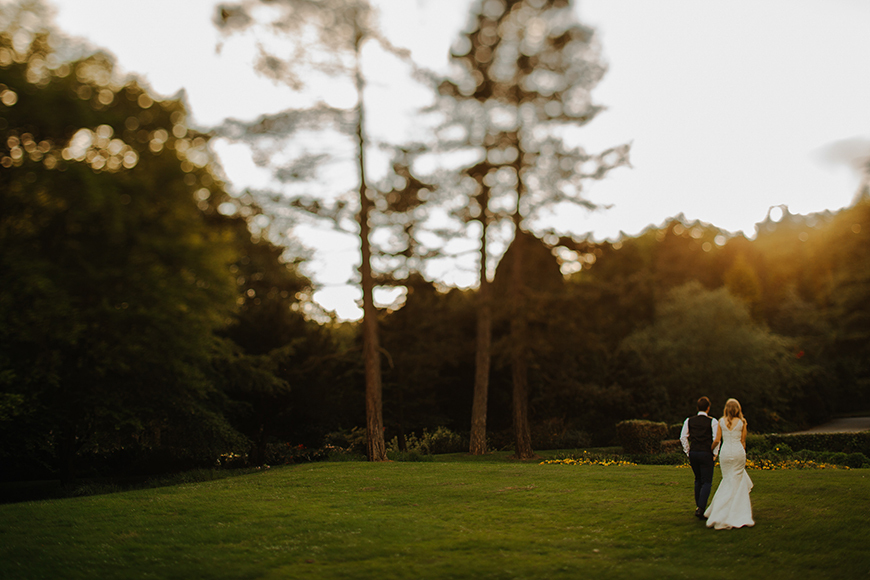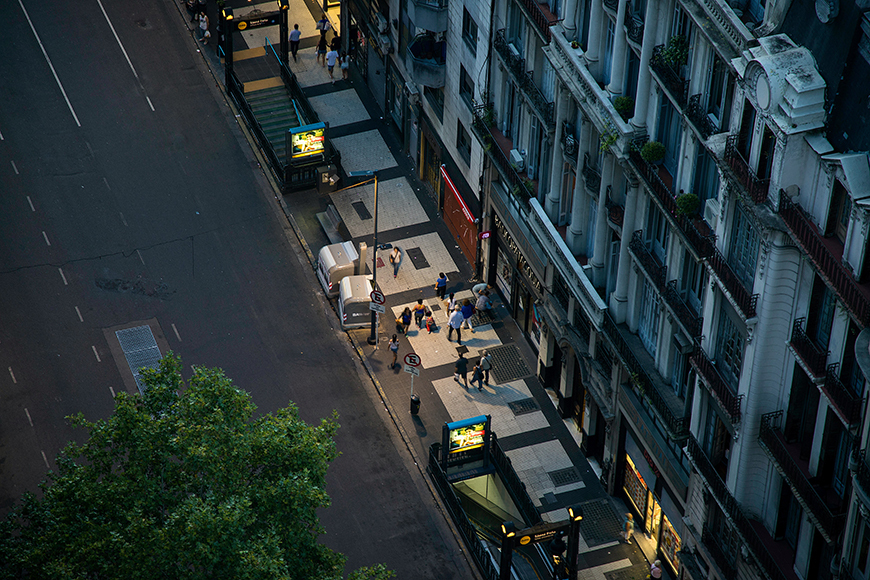
How to Use a Tilt Shift Lens in 2024 (+ 7 Best Lenses)
Open up the creative possibilities of a tilt-shift lens with this guide! Learn what they are, how and when to use one, and the best 7 options for Canon & Nikon.
Learn | Photography Guides | By Ana Mireles
Shotkit may earn a commission on affiliate links. Learn more.
You’ve probably seen or heard about the miniature effect.
There are tons of tutorials that show you how to do tilt-shift photography on your smartphone.
There’s also a Tilt-Shift Effect in Photoshop that you might have used.
However, all of these are just mimicking a real perspective control that can be done with a tilt-shift lens.
With one of these, you can move the focal plane for all sorts of effects.
The question is, are tilt-shift lenses worth it?
In this article, I’ll explain how these speciality camera lenses work and what you can do with them so you can answer that question for yourself.
And, if the answer is yes, you’ll find a list of recommended tilt-shift lenses at the end.
What Is a Tilt-Shift Lens?
A tilt-shift lens allows you to change the orientation or position of the lens. This way you can move the focus plane independently from the sensor plane either by shifting it or tilting it. It’s a specific type of perspective control lens.
If it sounds quite complicated, allow me to explain it with some examples.
A tilt-shift lens allows you to photograph a tall building without perspective distortion. In other words, it prevents the vertical lines from pinching in.
Using the same principle, you can also photograph a mirror as if the camera were directly in front of it but avoiding its reflection because the camera will actually be a little bit to the side.
Another thing that you can do when you tilt the focus plane is to use an infinite depth of field. This is extremely useful for landscape photographers who need to keep the entire scene sharp. You can also apply this to product photography.
Profiting from the opposite effect, wedding photographers have found tilt-shift lenses useful for creating a dreamy atmosphere while having a very selective depth of field.
The effect that has become most popular for shift-tilt lenses in the creative field is the illusion of miniaturizing your subjects as if they were part of a diorama.
Filmmakers have also taken advantage of this power of changing perspective, and you can make use of this too since most modern cameras also capture video.
It’s worth mentioning that tilt-shift lenses can be found in wide-angle, standard, and telephoto focal lengths. You should also keep in mind that they don’t have auto-focus features, which can be a downside.
What Is a Tilt-Shift Lens Used For?

Tilt-Shift lenses are popular in wedding photography for creative effect. Credit: Tom Pumford
You can use a tilt-shift lens for many things, such as:
- Preventing vertical converging lines
- Keeping the entire scene in focus even with a wide aperture
- Making some creative selective focus choices
- Changing the position of the camera without altering the resulting image
- Preventing the parallax effect when shooting panoramas
- Experimenting with forced perspective
Why Are Tilt-Shift Lenses So Expensive?
By now you’re probably sold on the benefits of this kind of lens, so if you’re wondering, just how much is a tilt-shift lens? Prepare to be disappointed!
Tilt-shift lenses can range from $2,000 to over $5,000. They cost this much because they require a lot of design and engineering to move the optics.
Plus, they’re used by a very specific niche of photographers, so they can’t benefit from the price reduction that comes from mass-production.
How Much Do You REALLY Know About Photography?! 🤔
Test your photography knowledge with this quick quiz!
See how much you really know about photography...

Don’t get discouraged though: some brands like Rokinon and Samyang offer more accessible prices. And if you just want to try one out for fun, you can always rent a tilt-shift lens for a day.
How to Use a Tilt-Shift Lens

Credit: Sander Crombach
A tilt-shift lens has different camera movements that are impossible to do with a normal lens. You can tilt the lens up and down, and if you rotate it, you can tilt it left and right.
In the same way, you can shift the lens left and right or up and down.
You can use the tilt feature or the shift feature by themselves, or you can tilt and shift. If you’re using both though, you still need to adjust each one separately.
-
Tilt Feature
Vertical Tilt – This is the function that made tilt-shift lenses famous for photographers who are outside its niche market. That’s because, with this, you can create the miniature city effect that has become so popular.
Of course, most people do it in post-production but this is how it’s done in-camera:
- Position yourself on a higher plane than your scene. Maybe on a bridge looking down to a lake or a balcony looking down at the street.
- Compose your scene and tilt the lens upwards.
Now the scene will look like it’s a small scale model of reality. If you need to, you can tilt the camera down to compensate for the change in composition.
With this movement, the depth of field is very small, so choose the point of focus and use the live view to zoom in and make it sharp. Remember that these lenses only use manual focus.
Horizontal tilt – When you tilt your lens left or right, you can change the direction of the focal plane to keep everything sharp in your scene.
This is known as extending the focus. With a normal lens, the plane of focus and the sensor plane are parallel. To have a deep depth of field you need to use a very small aperture.
Even then, sometimes it’s impossible to keep everything sharp and you have to use a post-processing technique called focus stacking.
With a tilt-shift lens, you can tilt the focal plane to be perpendicular to the sensor plane and this will keep the scene sharp from the foreground to the background without sacrificing the amount of light.
This technique is mostly used for landscape and product or tabletop photography.
-
Shift Feature
Vertical Shift – This is probably the most used movement with tilt-shift lenses because it stops perspective distortion. This is extremely useful in architectural photography.
When you’re photographing a tall building with a normal lens, you need to position yourself far away and high up if you want it to look straight.
Unfortunately, this is not always possible. So, you find yourself looking from the ground up causing the building to look distorted. In other words, the lines that are supposed to be vertical look pinched in.
With a tilt-shift lens, you can be at street level and compose your image levelling up your camera. At this point, you’ll have a lot of foreground in the frame and not the top of the building.
Now start to shift the lens upwards and you’ll see how the foreground starts to fall out of the frame and the rest of the building appears on top. All of this with the lines still straight.
With this method, you’ll have the entire building in the composition without distortion just as if you photographed it from a higher plane – except that you didn’t have to move at all.
Professional architectural photography is impossible without a tilt-shift lens.
Horizontal Shift – This movement is perfect for making panoramas. Normally, to take a panorama you make a series of images that are later stitched together in Photoshop, or any other photo editing software (see our guide for the best options).
Each one of the images you take with a normal lens will have a certain amount of distortion. How much of it will depend on the type of lens.
Because of this, Photoshop needs to warp those images to correct that distortion. In the process, they are losing sharpness.
Also, when you use the cylindrical mapping to avoid the ‘bow-tie’ distortion, you’ll be losing information from the edges.
When you use a tilt-shift lens, you can shift the lens all the way to one side and take a picture. Then shift it towards the other side, taking a picture at every stop.
This way, you’ll have a set of distortion-free images to stitch a perfect panorama, and you’ll be preventing any ghosts or artifacts that come from the parallax effect.
Recommended Tilt-Shift Lenses in 2024

Canon TS-E 45mm Credit: Tom Pumford
Interested in picking up a tilt-shift lens of your own?
Here are our recommendations for the best tilt-shift lenses available right now. Note that tilt-shift lenses only exist natively for Nikon and Canon cameras, although Sony and some other camera brands do support adapted tilt-shit lenses.
1. Canon TS-E 17mm f/4 – This is an ultra-wide-angle lens from Canon’s luxury line. It has a +/- 6.5° tilt and +/- 12mm shift. It’s an EF-Mount which means that it’s meant for full-frame sensor cameras. It’s useful for architectural photography and interior photography (especially small spaces).
2. Canon TS-E 50mm f/2.8 – This is a standard lens with macro capabilities from Canon’s luxury line. It’s, of course, useful for architecture and interior photography, like all tilt-shift lenses. However, the macro capabilities make it particularly suited for product and tabletop photography.
3. Canon TS-E 90mm f/2.8 – This short telephoto lens has +/- 8° of tilt and +/- 11mm of shift. It’s not a red line lens which makes it more affordable while maintaining very high quality.
4. Nikon PC-E Micro-NIKKOR 85mm f/2.8D – It has +/- 8.5° of tilt and +/- 11.5mm of shift. It’s also possible to rotate the axis +/- 90°. Perfect for photographing close up subjects.
5. Nikon PC-E NIKKOR 24mm f/3.5D ED – This wide-angle lens offers +/- 8.5° of tilt and +/- 11.5mm of shift, plus +/- 90° of rotation. It’s made with nanocrystals and super integrated coating to ensure quality and avoid flare even in extreme lighting conditions. This makes it perfect for outdoor photography like landscape and architecture.
6. Rokinon 24mm f/3.5 ED AS UMC for Canon – Compatible with full-frame and APS-C format (38.4mm in the latter). It has a +/-8.5º shift and +/-12mm with a 90º rotation. A wonderful choice for the budget-conscious Canon photographer.
7. Rokinon 24mm f/3.5 ED AS UMC Lens for Nikon – Compatible with full-frame and cropped sensor (36 mm for the latter). It offers a +/-8.5º shift and +/-12mm with a rotation of 90º. The perfect tilt-shift lens for the budget-conscious Nikon photographer.
If you have a Sony camera you can find tilt-shift lenses from Rokinon (also known as Samyang) and Scheider.
Final Words
As you can see, you can create some amazing things using a tilt-shift lens, from gaining perspective control to manipulating the plane of focus. It’s also a great way to make those miniature figures for photography look even more minified!
If you use this technique often, either for creative or for technical reasons, then investing in a tilt-shift lens is worth it.
If you just want to have some fun (because they are fun!) you can always rent one. Either way, you should definitely try out your own tilt and shift photography.
Got any questions or comments? Leave us a note below.

Check out these 8 essential tools to help you succeed as a professional photographer.
Includes limited-time discounts.













